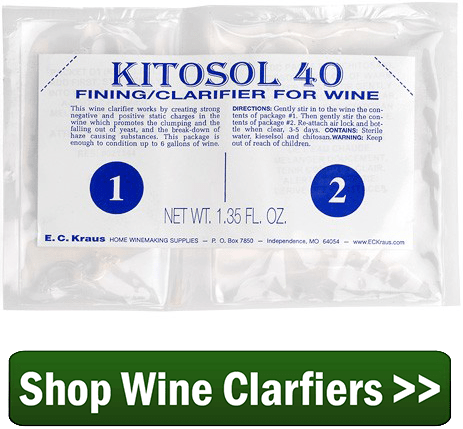 In several earlier posts, we introduced a few home winemaking terms that you may or may not be familiar with. There are many terms to learn in home winemaking, and this post, like all the previous posts, gives you a short introduction to a few of those terms to help you get started in home winemaking, or perhaps brush up on some of the terms you may not have seen in a while.
In several earlier posts, we introduced a few home winemaking terms that you may or may not be familiar with. There are many terms to learn in home winemaking, and this post, like all the previous posts, gives you a short introduction to a few of those terms to help you get started in home winemaking, or perhaps brush up on some of the terms you may not have seen in a while.
- Pectic Enzyme: Used during the clarification process, Pectic Enzyme effectively eliminates the pectin cells that can cause a milky-like haze in your wine. Additionally, Pectic Enzyme can help with the extraction of body and color from your pulp.
- Diatase Enzyme: Just like Pectic Enzyme, Diatase Enzyme is also utilized during the clarification process of winemaking. However, unlike Pectic Enzyme, Diatase Enzyme is used to clear the haze caused by various starches (while Pectic Enzyme clears Pectin).
- Polishing: Similar to giving your car a good wax job, polishing a wine is a method of ultra-fine filtration that leaves your wine particularly bright and clear. To polish wine you can use a fining agent such as isinglass. One downside to polishing, which is often cited by premium winemakers as a reason for not using the method, is that this type of ultra-fine filtration may also remove important flavor compounds or other polyphenols that are required for complexity and quality.
 Transfer Method: The Transfer Method is just one of several different methods for producing sparkling wine, though is not a method that is used in the Champagne region of France (they use the Traditional Method there). For the Transfer Method, the wine goes through secondary fermentation within the bottle, however when the bottles are open, the wine is then transferred into a single tank where it is then filtered and then rebottled into large format bottles.
Transfer Method: The Transfer Method is just one of several different methods for producing sparkling wine, though is not a method that is used in the Champagne region of France (they use the Traditional Method there). For the Transfer Method, the wine goes through secondary fermentation within the bottle, however when the bottles are open, the wine is then transferred into a single tank where it is then filtered and then rebottled into large format bottles.- Aromatized Wine: An aromatized wine is a wine that has been flavored with herbs, flowers, fruit, or other spices. Two examples of an aromatized wine are Vermouth (flavored with various seeds, herbs, barks, flowers, etc) and mulled wine (hot, spiced wine).
- Devatting: If you’ve ever made wine from red grapes, there is a chance you’ve already performed some devatting (even if you weren’t aware that is what it was called). Basically, devatting is the term that defines the process of separating the red wine must from the grape pomace that remained after the crushing process. Another way to think of it is you are basically removing the solid bits from the liquid bits before fermentation has started.
- Hogshead: Contrary to what imagine may come to mind, a Hogshead is just a wine barrel that can hold up to 63 gallons or 239 liters.
More Winemaking Terms: Here is a list of other post about home winemaking terms: Part 1 | Part 2 | Part 3 | Part 4 | Part 5 | Part 6 | Part 7 | Part 8 | Part 9 | Part 10 | Part 11 | Part 12 |
—————————————————————————————————————–
Ed Kraus is a 3rd generation home brewer/winemaker and has been an owner of E. C. Kraus since 1999. He has been helping individuals make better wine and beer for over 25 years.

Are the seeds part of the must or are they a problem and should somehow be removed?